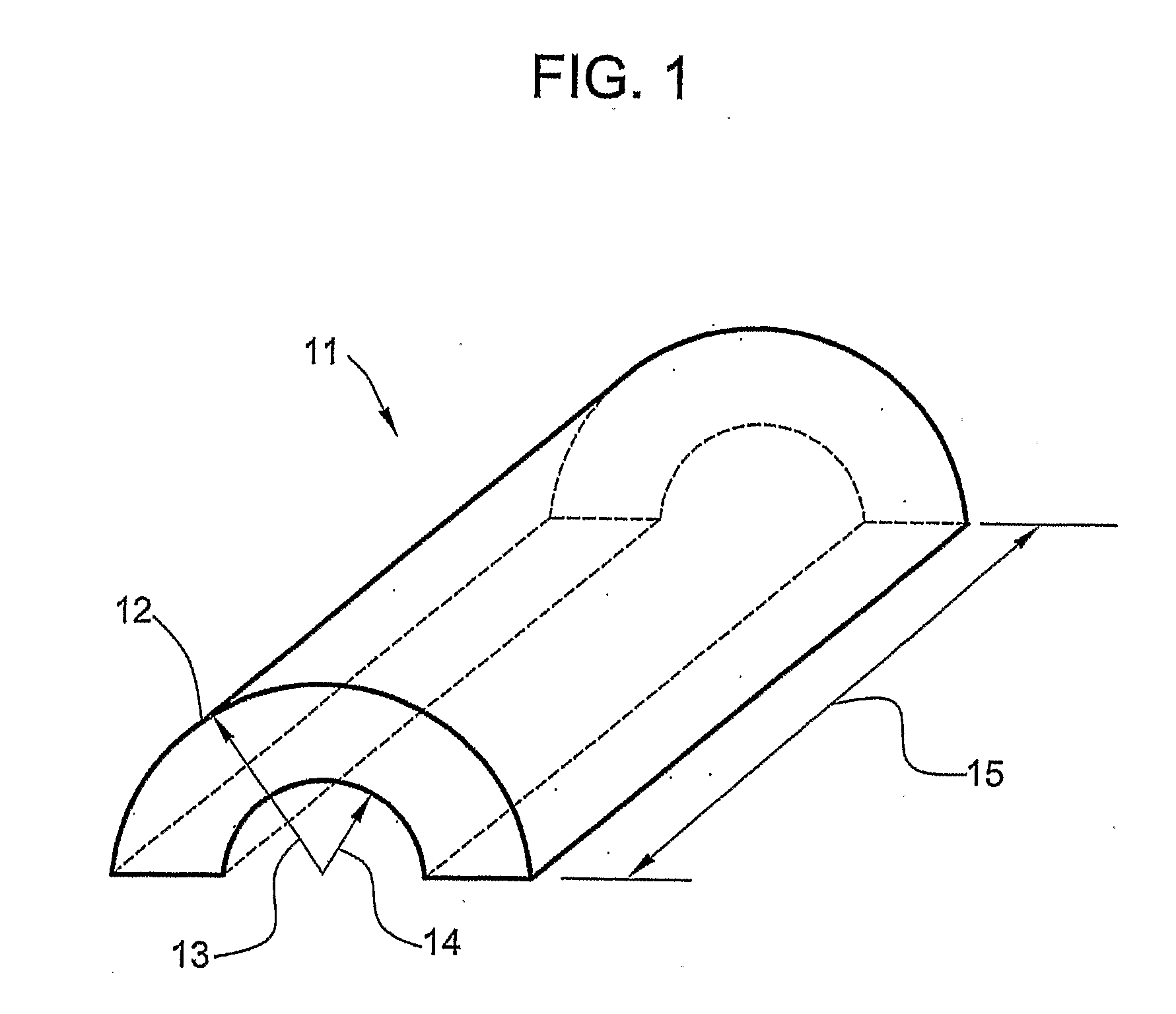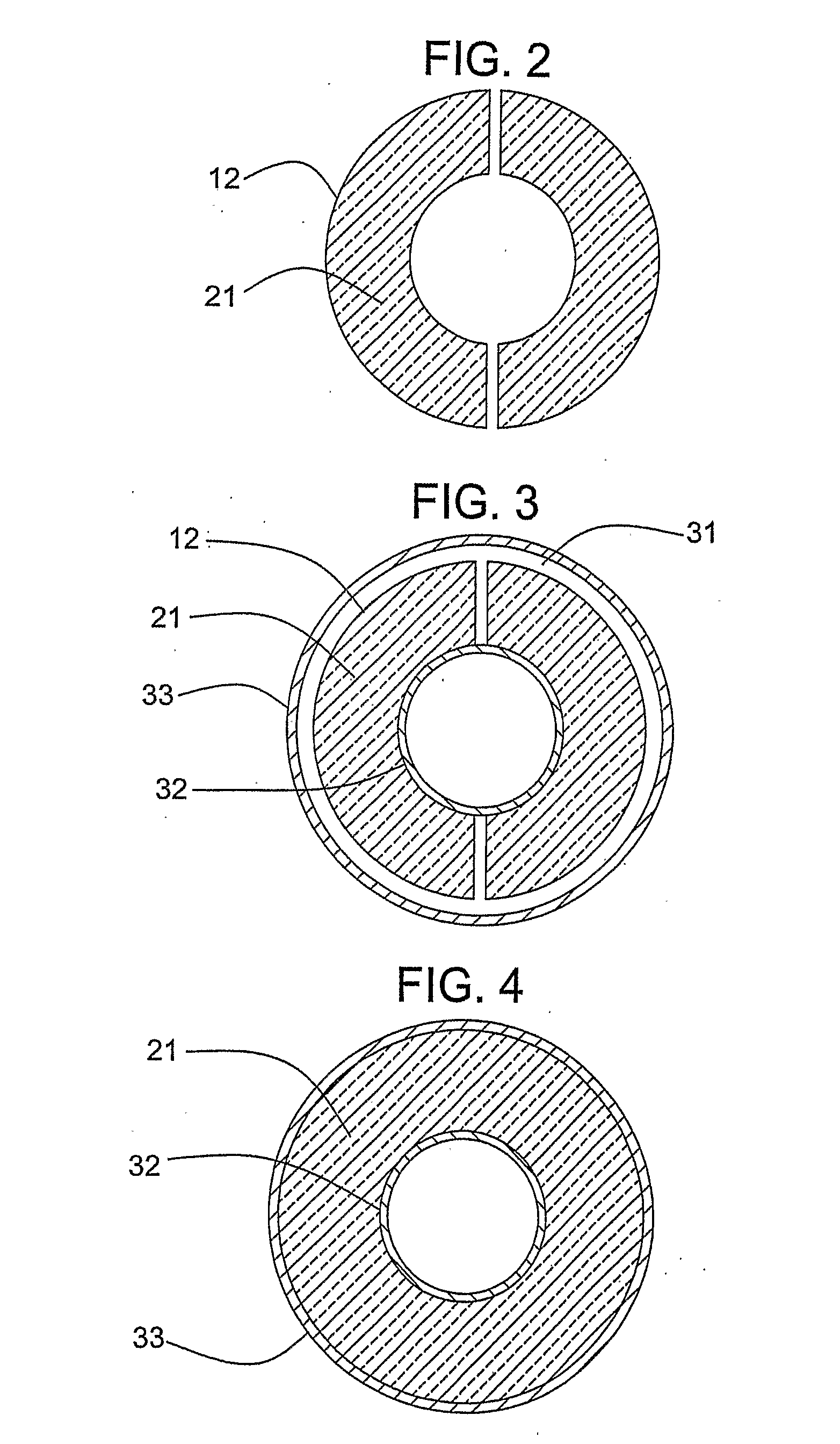Insulated pipe and method for preparing the same
a technology of insulating pipes and pipes, which is applied in the field of preparing the same, can solve the problems of reducing the insulation efficiency of the insulating pipe, putting the performance of the assembly at risk, and reducing the amount of insulating materials required
- Summary
- Abstract
- Description
- Claims
- Application Information
AI Technical Summary
Benefits of technology
Problems solved by technology
Method used
Image
Examples
example
[0116]This example further illustrates the invention but, of course, should not be construed as in any way limiting its scope.
[0117]Four different amounts of silica aerogel particles were placed into a Plexiglas cell having an interior volume of 20×20×1 cm. In Sample A (control), the silica aerogel particles were disposed in the cell without any compression. In Samples B, C, and D (invention), increasing amounts of the silica aerogel particles were disposed in the cell with increasing amounts of compression to fit the silica aerogel particles within the interior volume of the cell.
[0118]For each sample, the percent compression was determined from the silica aerogel particle volume before compression (Vb) and the silica aerogel particle volume after compression (Va=working cell volume=400 cm3), i.e., the interior cell volume, using the following equation: Percent Compression=[(Vb-Va) / Vb]×100%. The bulk density of each sample was calculated by dividing the weight of the silica aerogel...
PUM
| Property | Measurement | Unit |
|---|---|---|
| particle size | aaaaa | aaaaa |
| pressure | aaaaa | aaaaa |
| thermal conductivity | aaaaa | aaaaa |
Abstract
Description
Claims
Application Information
 Login to View More
Login to View More - R&D
- Intellectual Property
- Life Sciences
- Materials
- Tech Scout
- Unparalleled Data Quality
- Higher Quality Content
- 60% Fewer Hallucinations
Browse by: Latest US Patents, China's latest patents, Technical Efficacy Thesaurus, Application Domain, Technology Topic, Popular Technical Reports.
© 2025 PatSnap. All rights reserved.Legal|Privacy policy|Modern Slavery Act Transparency Statement|Sitemap|About US| Contact US: help@patsnap.com



